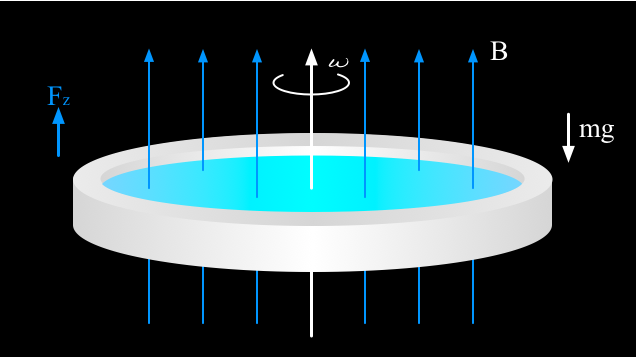A hypothesis is just a hypothesis until it has some observational or experimental confirmation. So it is with great interest that I recently read that Prof. Martin Tajmar, known for his testing of the EmDrive, has set his laboratory upon the task of performing experiments featuring a different potential energy generation technology that like Steorn and LENR also is an outlier in the realm of “new physics”.
You may recall that Tajmar is the Professor and Chair for Space Systems at the Dresden University of Technology’s Institute of Aerospace Engineering who confirmed some of the initial positive results of the EmDrive device for propellantless propulsion, as described in the International Business Times. Dr. Tajmar has also published other studies this year attempting to replicate previous research involving propellantless propulsion including experiments by E. Podkletnov and G. Modanese and Henry Wallace in the 1970s. However, in one replication he found only an anomaly ascribed to vibrational artifacts, and in the other found inconclusive results due to mechanical vibration, acoustic effects and unexpected destruction of the apparatus support structure.
So what does this have to do with energy generation? Tajmar himself published several articles beginning more than a decade ago that reported generation of a gravitational anomaly (see the listing at the conclusion of this article). These studies led to Tajmar filing a patent on a gravity generator, which if it ever worked might have been used to generate electricity: (WO/2007/082324) METHOD FOR GENERATING A GRAVITATIONAL FIELD AND GRAVITATIONAL FIELD GENERATOR.
One notable aspect of any gravity field generator employing rotational components and producing an axial gravity-like force would be a second force component in an azimuthal direction (tangential in the plane of rotation) producing torque on the rotor. In such a configuration energy need not to be supplied to keep the angular velocity constant. In other words, it becomes a generator suitable for electrical power production. Unfortunately, in his original experiments Tajmar’s configuration was designed to produce a field acting in the circumferential direction of the rotating ring, opposing its origin, not an axial field. However, there is an axial design soon to be tested by Tajmar that could be a candidate for a power generator.
Enter the work of Jochem Hauser and Walter Droescher’s models expanding general relativity to include two additional gravity-like forces that interact with electromagnetism to produce gravity-like fields. Jochem Hauser is a computer simulation consultant to ESA and professor emeritus in Germany. He and Martin Tajmar, who have been in communication with each other since about 2005, have agreed to collaborate on a “bench test” of Hauser’s designs involving the rotation of selected materials to produce an axial gravity-like field. A grad student has been assigned to it and will be performing tests in the next few months.
Just weeks ago a new book by Hauser and his collaborator Walter Droescher entitled, “Introduction to Physics, Astrophysics, and Cosmology of Gravity-Like Fields,” became available and in it those upcoming tests are mentioned. Their book is the most complete presentation of their work to date. If Hauser is correct, one outcome of generating an axial gravity-like field would be a tangential force on the rotating components that could generate a self-sustaining rotation. This secondary force would be the gravitational analog of a homopolar electric motor by translating axial and radial flows of current into an azimuthal rotation of a magnetic rotor. The force in the case of a homopolar motor is called the Lorentz force. In the case of this bench test it has been termed the Heim-Lorentz force, a nod to Burkhard Heim on whose foundation (but not the mathematics) the work of Hauser and Droescher are based.
As Hauser admits, he could be wrong and none of this might work (though I hope that is not the case after having written a book about him and his efforts). He has proposed two versions of the experiment for producing axial fields. The first is the older approach described in his and Droescher’s early papers. That version comprises a superconducting Pb coil with a rotating Nb disk operating at the temperature of liquid He (4-6º K). The second is a much simpler experimental configuration consisting of an external ring, comprising a mixture of two elements, and an embedded disk of special nonmetallic material. The rotating ring-disk assembly should have the advantage of working at the temperature of liquid N (75º K).
If positive results are obtained this spring, then both the E-Cat (with results due out early in 2016) and Steorn (independent confirmations also expected in early 2016) may have some competition.
Publications on gravity field generation by Tajmar. Although his earliest studies indicated significant anomalous results, later studies show lesser effects.
- M. Tajmar and C. J. de Matos. Gravitomagnetic field of a rotating super- conductor and of a rotating superfluid. Physica C, 385:551–554, 2003.
- C. J. de Matos and M. Tajmar. Gravitomagnetic London moment and the graviton mass inside a superconductor. Physica C, 432:167–172, 2005. Doi: 10.1016/j.physc.2005.08.004
- M. Tajmar and C. J. de Matos. Extended analysis of gravitomagnetic fields in rotating superconductors and superfluids. Physica C, 420:56–60, 2005. Doi: 10.1016/j.physc.2005.01.008.
- M. Tajmar, F. Plesescu and K. Marhold. Measurement of gravitomagnetic and acceleration fields around rotating superconductors. AIP Conf. Proc. 880, p. 1071-1082 (2007).
